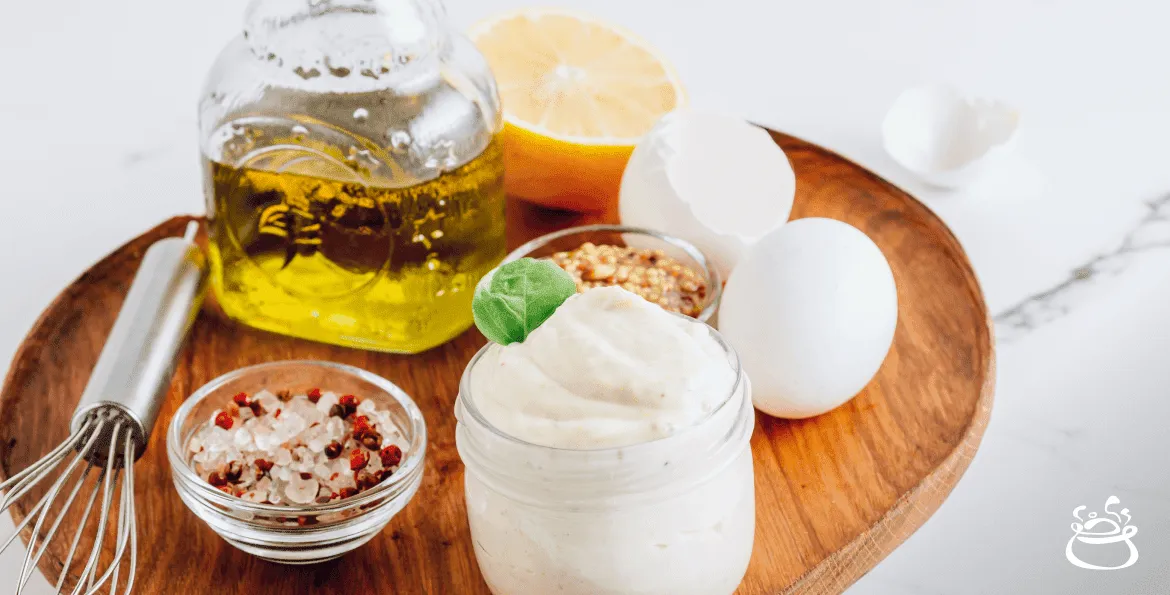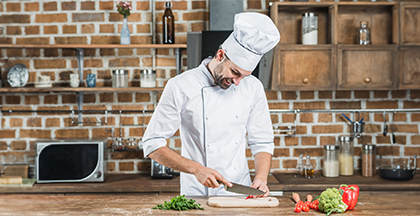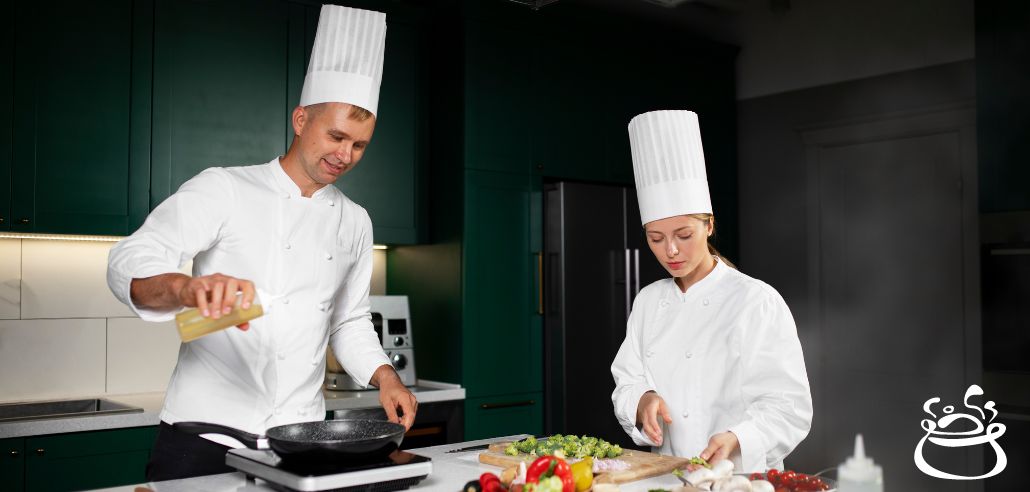The Secret to Creating Perfect Emulsions Every Time
Ready to conquer the culinary challenge of emulsifying seemingly incompatible liquids? Whether you’re trying to add oil to a vinaigrette dressing, combine cream and stock for a luxurious soup, or even make mayonnaise with beer and egg yolks, we’ve got you covered! This guide is packed with time-saving tips and tricks to transform any confusing mixture into a light, creamy emulsion that will tantalize your taste buds and impress your guests. So why wait? Let’s take the fear out of emulsifying and turn you into a culinary master in no time.
What is an Emulsion?
An emulsion is a combination of two liquids that are typically immiscible, such as oil and vinegar. In food products, it refers to a combination of fat and water molecules held together by an agent called an emulsifier. Many common foods are emulsions, including mayonnaise, salad dressing, maple syrup, and even ice cream. The technique creates smooth mixtures, often used in baking and cooking. Emulsions are popular for making rich sauces that wouldn’t be possible with just two ingredients; the fats give flavor, while the waters provide volume and texture. And because they come from natural ingredients, these food emulsions are usually healthier than their non-emulsified counterparts.
Types of Emulsions
Emulsions in cooking and baking have been around for centuries. It’s a suspension of one liquid in another, such as oil and water, stabilized by an emulsifier like lecithin. Food emulsions come in many forms, from milk and dressings to chocolate, sausages, and ice cream. The two most common types are oil-in-water (O/W) and water-in-oil (W/O).
O/W emulsions are more common because they’re easier to make. These emulsions often comprise hydrated oils with larger molecules suspended in a liquid medium like water or juice. W/O emulsions, such as butter or margarine, use smaller droplets of water suspended in an oil medium. The flavor and texture of food emulsions vary depending on their ingredients and the emulsion used. So while they are all essentially composed of the same elements – fat, water, and an emulsifying agent – these ingredients can combine to create entirely different flavors and textures.
Factors to Consider in Creating Perfect Emulsions
Achieving the perfect emulsion is a coveted culinary accomplishment that demands consideration of various crucial factors. When crafting an ideal emulsion, you need to consider multiple aspects, such as pH level, temperature, and the ratio of oil to water. Also, adding specific types of acid to aid with the mixing can result in an even more stable state for the emulsion. Achieving perfect emulsions demands a lot of careful measuring and skill on the part of the personal chef, as making mistakes any step of the way can lead to a failed attempt at creating this magical combination. With that said, getting those ratios right is well worth it when you see how it enhances your culinary masterpiece.
Ingredients and Ratios
Achieving the ideal combination of ingredients and their ratios is critical to attaining a stable emulsion with superior properties, like taste, texture, and flavor. Finding the right balance of oil, acid, and water in proper amounts is necessary for your emulsion to be cohesive. With appropriate consideration, your emulsion will look and taste great and have desired properties that bring out the best in whatever dish you create. Pay close attention to ratios, as they are crucial when combining ingredients.
Temperature and Stirring Speed
Creating the perfect emulsion is the key to unlocking a world of delicious dishes, from creamy dips to intricate sauces. While some ingredients, such as oil and lemon juice, will remain the same in all recipes, it’s essential to pay close attention to the temperature and stirring speed. Temperature is a game-changer, not only thinning out the mixture for effortless blending but also preventing it from splitting. The emulsion components come together perfectly by heating them slightly before mixing, resulting in a light and smooth texture. But beware of stirring too little or too slowly – the creams and liquids will refuse to cooperate. And if you stir too quickly, you run the risk of over-aerating certain ingredients. However, with precise temperature control and the right stirring speed, you can create a perfectly proportioned emulsion every time.
Additives and pH Levels
Creating perfectly balanced food-related emulsions requires a delicate balance of science and art. It’s essential to pay attention to the additives and pH levels in the environment where you make the emulsion. A little bit of gum or xanthan can go a long way in ensuring the desired consistency and stability in your emulsion-based product. But, neglecting to add these crucial ingredients could result in an unstable environment, ruining your final product. Fine-tuning the pH levels with acids or bases is another critical component to creating a mouth-watering, perfectly emulsified dish. Make sure to add your ingredients at the right time and temperature, and you’ll have a consistently delicious and stable emulsion.
Tips for Perfect Emulsions
Making the perfect emulsion is challenging but possible if you know what to watch for and follow some tips. Learning about different types of emulsifiers and stabilizers, knowing when to combine the ingredients, and understanding the pH balance of your creations are all key elements in successful emulsification. Whisking carefully and adding the right amount of fat or oil can keep emulsions from separating and improve their taste and texture. These fatty substances serve as a protective barrier, helping to prevent the emulsion from separating or becoming unstable. The result will be a smooth, well-blended, and delicious outcome.
Start with Room Temperature Ingredients
Creating the ultimate emulsion can seem challenging, but fear not. A simple secret to success is to start with ingredients that are at room temperature. This factor is crucial as it gives your ingredients a uniform consistency, allowing them to blend seamlessly and create a flawless and distinct layer. Not to mention, keeping all the ingredients at room temperature guarantees the emulsion’s stability by allowing each ingredient to mix to its potential with the others.
Monitor Temperatures and Stirring Speed Carefully
Bringing the art of emulsion to life requires a delicate touch. It’s all about getting the temperature just right and stirring with care. A distraction could lead to disaster, resulting in separated and gritty ingredients. To avoid such an outcome, equip yourself with a temperature monitoring device. And when it comes to stirring, slow and steady is the way. This method guarantees an even mix of ingredients, leading to irresistible and sumptuous emulsions that will have your loved ones singing your praises.
Choose the Right Additives
Selecting suitable additives such as thickeners and stabilizers is crucial for a stable emulsion. Start by choosing an oil-in-water emulsion where a surfactant can attract the oils to help hydrate. Make sure to pick compatible salts, thickeners, pH buffers, and other amino acids or peptides that can reduce viscosity to provide extra stability. It also helps to add hydrocolloids or other high molecular weight polymers that bind both oils together while adding texture and improved sensory experience. With the right combination of additives, you’ll be able to create that desired emulsion.
Types of Emulsion-Based Dressings & Sauce
Emulsion-based dressings and sauces play a crucial role in enhancing the taste and texture of various culinary dishes and creations. The two primary categories of emulsion-based dressings are mayonnaise and vinaigrette, with vinaigrette being a straightforward mixture of oil and vinegar. As far as sauces are concerned, some popular options are hollandaise, béarnaise, béchamel, and tomato sauce. Understanding the process of creating an emulsion will enable you to make sumptuous dishes with stable blends of oil or fat dispersed uniformly. By being aware of the different types of emulsion-based dressings and sauces, you can expand the range of options for your cooking skills and experience
Making Emulsified Salad Dressings
Creating a perfectly emulsified salad dressing requires a combination of oil, vinegar, seasonings, and other flavors like garlic and onion. The result is a smooth and creamy texture that elevates any salad to the next level. To ensure that your salad dressing is consistently perfect, understand the basics of emulsions and the ingredients that work best together. The first step in making a salad dressing is to mix the oil and vinegar until they are evenly combined, forming the foundation of your dressing. After that, you can add any desired seasonings, such as garlic powder or diced onions, to enhance the flavor. If the dressing is too acidic, you can soften the taste by adding sugar. Finally, pour all your ingredients into a blender and blend on low for around 30 seconds. Doing so will blend everything seamlessly and result in an incredibly flavorful salad dressing.
Conclusion
Emulsification remains a critical procedure in the food industry as it enables manufacturers and producers to produce products rich in flavor, texture, and nutrients. The process has transformed the food industry, and with ongoing advancements in emulsification techniques, it highlights its significance in creating tasty products that meet contemporary food safety standards. The continuous advances in emulsification techniques have made it possible to achieve anything with this powerful tool, which explains why it continues to be an essential component of food production. The limitless potential of emulsification techniques guarantees that they will remain a vital part of how we prepare the foods we love.












 Home
Home
 Chefs
Chefs
 Chats
Chats
 My Order
My Order

